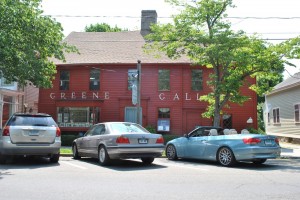Built by Dan Collins where a shop had stood earlier, this is one of two eighteenth- century houses remaining on the west side of the Green. (See No. 81 for the other.) Collins and his wife, Amy Bristol, lived here for ten years before moving to Massachusetts. Among the house’s many other owners were James Cezanne (1792), a Frenchman from the island of Guadeloupe, and the Reverend Israel Brainard (1804) who was dismissed from the First Congregational Church for holding beliefs too progressive for his congregation. Amos Seward and his wife, Sarah Hubbard, bought the house in 1814 and it remained in their family for many years. A later addition at the north end which causes the chimney to appear off-center shows how the building grew with its many uses. Primarily a residence, it also housed a post office kept by Seward, second postmaster of Guilford, and in 1880 a cobbler’s shop. The Greek Revival doorway is a nineteenth-century addition, a common way in Guilford to update a Colonial design. The house escaped destruction in the fire of 1872 when firemen, helped by a north wind, held the burning wall of the neighboring building with pikes until it began to crumble and then pushed it away.
From Guilford: A Walking Guide, the Green & Neighboring Streets [by] Sarah Brown McCulloch. Text from 2006 printing, revised, with editorial notes in brackets from 2012.




